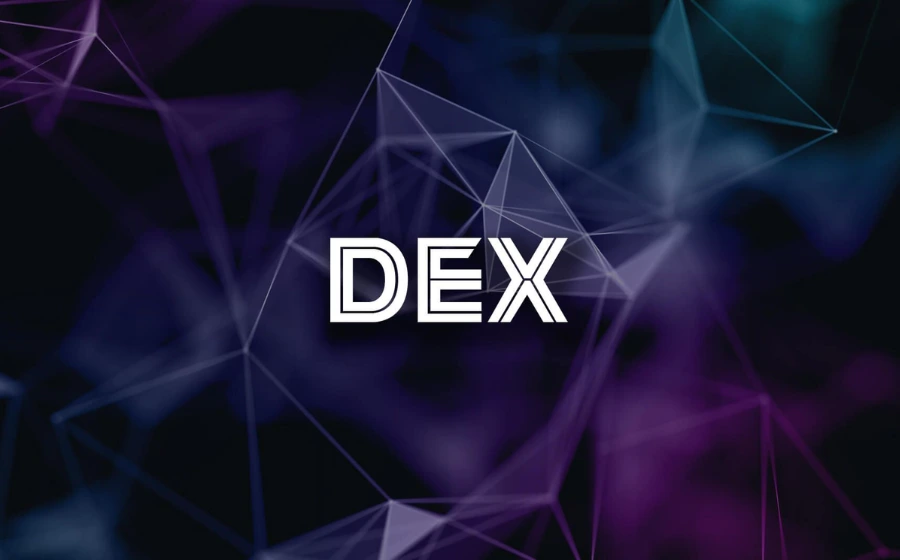
KEYTAKEAWAYS
-
Rapid Growth and Challenges: As cryptocurrencies like Bitcoin gain global acceptance, the number of users and trading volumes increase, accompanied by challenges like fraud and regulation needs.
-
Impact of Major Incidents: High-profile failures such as the collapse of Mt.Gox and FTX have prompted significant regulatory responses worldwide, emphasizing the need for robust internal controls and transparency.
-
Future Regulatory Trends: 2024 is set to see enhanced crypto regulations, focusing on licensing, the Travel Rule, and stablecoin oversight to ensure market stability and investor protection.

CONTENT
*This article was originally published in Chinese and on the Blog- Code and law.
In this article, CoinRank offers a detailed analysis of the crypto asset market, highlighting regulatory developments and the evolution of trading practices.
THE MATURING CRYPTO ASSET MARKET
As Bitcoin becomes increasingly accepted by most countries and people, the number of investors and holders of cryptocurrencies continues to grow. When people start investing in cryptocurrencies, they often use centralized cryptocurrency exchanges to trade, which act as ports connecting the fiat and cryptocurrency worlds.
With the increase in trading volume, cryptocurrency trading is also exploited by fraud and criminal activities, such as money laundering. On the other hand, some centralized exchanges, due to their inadequate management or weak information security measures, have caused users’ assets to be affected, as seen in the sudden collapse of Mt.Gox, the world’s largest Bitcoin exchange in 2016. This incident led to the regulation of cryptocurrency in Japan, making it the first country in the world to regulate cryptocurrency exchanges.
Following the Mt.Gox exchange incident, there have been subsequent large exchanges such as Binance, and FTX ., which offer various new trading models, not only spot trading but also various derivative investment methods such as options and contract trading. At that time, many exchanges chose to register in jurisdictions with lower levels of regulation (such as FTX Global Exchange established in Panama) and quickly expanded their business empires through online and cryptocurrency community promotions. Due to lower regulation, they could also launch many innovative business activities. At that time, many large exchanges internationally were primarily offshore exchanges.
However, in 2022, FTX Exchange suddenly encountered internal financial problems, and serious internal control failures such as misappropriation of user assets, and then announced bankruptcy within a week, shocking the entire cryptocurrency community. The world’s second-largest exchange unexpectedly closed overnight, and many users (mostly overseas users registered with FTX) were severely affected. Exchanges and cryptocurrency companies representing client investments worldwide were also significantly impacted, plunging the entire industry into a cold winter.
As significant events and participants emerge in the industry, the public’s scrutiny of the internal management systems of exchanges and related cryptocurrency service providers, as well as whether there are relevant regulatory controls, has become increasingly important. The presence or absence of legal regulation has become a key factor in the industry’s entry into mainstream markets and gaining user confidence. The following sections of this article will predict and analyze several trends in cryptocurrency industry regulations in 2024.
IMPROVEMENT OF THE REGULATORY FRAMEWORK FOR CRYPTO-ASSET EXCHANGES
In 2022, the disclosure of FTX’s financial condition and the negative impact it had on the company instantly caused uproar in the entire cryptocurrency community, prompting everyone to pay attention to the importance of internal controls and financial information transparency of exchanges. The Hong Kong Securities and Futures Commission pointed out several suspicious aspects of the JPEX Exchange located in Hong Kong. JPEX was accused of operating without applying for a relevant license to operate a cryptocurrency exchange in Hong Kong and continued to promote its services to Hong Kong residents. Subsequently, the Hong Kong Securities and Futures Commission announced that it would publish a list of all licensed, considered licensed, closed, and pending application virtual asset trading platforms (VATPs) and introduce new measures to combat unregulated platforms.
On the other hand, in recent years, Binance has been continuously under investigation by the US government. US regulatory bodies such as the SEC and FinCEN believe that Binance has violated US anti-money laundering and sanctions laws. Binance is accused of having not reported financial transactions of designated terrorist organizations like Hamas and al Qaeda, allowing terrorists and criminals to use the exchange for money laundering activities, thereby channeling funds to criminal groups. In November 2023, Binance’s former CEO, Zhao Changpeng, pleaded guilty to money laundering in court, agreeing to pay a fine and resigning from his position as CEO of Binance. The US government has also demanded that Binance pay a fine of 4.3 billion USD, exit the US market, and accept supervision by the US government.
From the aforementioned events, we can see that financial regulatory bodies around the world are increasingly tightening their oversight on cryptocurrency exchanges, and are starting to gradually require foreign exchanges to register domestically and comply with local laws or establish specific legal regulations. Apart from Japan, which implemented a more comprehensive risk control system early on, recent regulations from Hong Kong’s Securities and Futures Commission, as well as the EU’s legislation passed in 2023—the Markets in Crypto-Assets Regulation (MiCA)—which is expected to be implemented in 2024, specifically define the legal status of crypto-assets and introduce regulations concerning activities related to crypto-assets. This law will also be applicable within the EU from December 2024.
As incidents of fraud, criminal activity, and exchanges misusing customer assets become more frequent, users are increasingly concerned about whether exchanges are regulated legitimately. Countries’ regulations are no longer limited to anti-money laundering regulations; financial regulatory authorities are also intensifying regulations on the crypto-assets industry. Both Asia and Europe have introduced specific regulations for exchanges, including demands for the implementation of financial information disclosure, anti-money laundering efforts, internal controls, information security, and most importantly, the protection of regional users’ rights and the requirement for exchanges to fully disclose the risks associated with investing in crypto-assets to their users.
TRAVEL RULE AGAINST MONEY LAUNDERING
Due to the Anti-Money Laundering (AML) guidelines for crypto-assets set by the FATF, the regulatory requirements for the crypto-asset industry in many countries mostly start with the implementation of AML, typically beginning with Know Your Customer (KYC) procedures to understand the identities of the clients and establishing relevant customer and transaction risk implementations. Among these AML measures is the so-called Travel Rule, a financial regulatory policy aimed at preventing money laundering and terrorism financing activities. It requires financial institutions to provide identity information about the sender and receiver during funds transfers.
However, the early implementation faced challenges because there was usually no alliance between different exchanges to assist in exchanging information mutually, and exchanging information between different exchanges also involved issues related to customer personal asset protection and information security. Additionally, although addresses on the blockchain can be created through corresponding software, due to the decentralized nature of the software and blockchain itself, the relationship between the created blockchain wallet addresses and the underlying individuals may remain unknown.
Therefore, the implementation of the Travel Rule also requires that if the related crypto-assets have been through an exchange, the exchange should, in principle, conduct KYC on its clients or those with transactions above a certain amount. Based on this, when users want to send crypto-assets to an external exchange or address, the identity of the sender can be known, and users are also required to provide the identity information of the recipient.
According to a report published by PwC in December 2023, which provides a summary and analysis of the regulatory environment for the crypto industry across 43 countries and analyzes whether these countries have a ‘regulatory framework,’ ‘licensing or registration,’ ‘Travel Rule,’ and ‘stablecoin’ regulations, there are 36 countries already have laws requiring the implementation of the Travel Rule, 5 are in the process of legislating, and only 2 have not yet begun legislative requirements. From this, we can foresee that the Travel Rule will continue to be expanded in 2024 and gradually lead to the establishment of an alliance among exchanges to facilitate the exchange of related information.
SUPERVISION OF CUSTODY OF CLIENTS’ FUNDS
The issue of client fund custody has traditionally been a common requirement in the operation of financial institutions, which entails entrusting client funds to a qualified third-party custodian when investing on behalf of clients. The purpose is to protect client assets to some extent in the event the financial or investment institution fails financially so that these assets do not become part of the bankruptcy estate subject to liquidation.
Since the collapse of the Mt.Gox exchange, investors in Japan faced a problem where their assets were considered part of the bankruptcy estate and could not receive priority in compensation; they had to be settled along with other creditors, which was highly insecure for the users. Consequently, Japan’s regulatory demands for crypto exchanges included the separation of the exchange’s own assets (both crypto and fiat currencies) from users’. In February 2023, the SEC proposed amendments to the ‘Custody Rule,’ a key protective measure in U.S. financial services regulation, requiring Registered Investment Advisors (RIA) to protect client funds and securities through a qualified custodian, including digital assets. The SEC also opened public comment on this amendment in May and August 2023.
As crypto asset investment becomes more mature, and financial institutions pave the way for crypto investment, client funds are inevitably required to be kept with independent and qualified custodians to mitigate risks. Moreover, the collapse of the large international exchange FTX and the ongoing security breaches and theft incidents further underlines the importance of asset separation as a measure to protect user asset safety. Additionally, after the approval of the spot Bitcoin ETF in January 2024, financial institutions will truly participate in Bitcoin spot investments, bringing substantial traditional fund investments into play. The supervision of asset separation and custody by ‘qualified custodial institutions’ will continue to be a focus in 2024.
REGULATION OF CURRENCY STABILIZATION
The 2022 Luna-related stablecoin crash raised public concerns about the safety of stablecoins. Previously, the two main factions providing stablecoins, USDT and USDC, satisfied the needs for hedging investments in the crypto asset market and international money transfers, leveraging the transnational nature of blockchain networks to facilitate easier fund transfers. However, this also posed new challenges in implementing anti-money laundering measures.
In the past market development, stablecoins emerged in forms such as crypto-asset-backed stablecoins, algorithmic stablecoins, and fiat-collateralized stablecoins. The essence of a stablecoin is a Token on the blockchain, maintaining its stability through different stabilizing mechanisms or the stability of the underlying assets linked to it. Therefore, a collapse of this system can have a significant impact on users. On the other hand, the issuance of stablecoins also involves national financial regulatory controls over currency issuance. For example, if stablecoin providers issue more stablecoins than their assets should allow, this could affect the country’s financial regulatory policies, making it a matter that needs to be managed.
Therefore, we can see how Japan, in 2022, was the first in the world to propose amendments to the stablecoin legislation, clarifying the distinction between stablecoins and other crypto assets, and excluding crypto-asset-backed and algorithmic stablecoins from the definition of ‘stablecoin.’ Currently, only fiat-collateralized stablecoins are classified as stablecoins under Japanese law. The Biden administration in the United States also included in its 2022 digital assets regulatory framework proposals to regulate stablecoins and is drafting relevant legislation for control. Additionally, the Hong Kong Monetary Authority (HKMA) and the Financial Services and the Treasury Bureau (FSTB) are currently proposing a licensing and regulatory system for fiat stablecoins. Specifically, it includes two aspects: issuance of stablecoins must obtain permission from the HKMA and comply with certain financial and licensing conditions. Furthermore, if stablecoins are to be sold to people within Hong Kong, only FRS issued by an issuer licensed by the HKMA can be sold to retail investors, while other FRS may only be offered to professional investors.
As stablecoins play a crucial and indispensable role in the crypto market, with their role in various blockchain applications such as DeFi and blockchain gaming, as well as in cross-border transfers and crypto asset investment, countries are also realizing the financial impact risks that the instability of stablecoins might bring. More regions are expected to introduce relevant regulations for stablecoins in 2024.
CONCLUSION
In the early stages of the development of the crypto asset industry, the lack of strict regulation seemed to be fertile ground for financial service innovation and the development of new types of services. However, as major exchange collapses and stablecoin crashes occurred, the public and regulatory bodies increasingly focused on enhancing the oversight of this industry, emphasizing that innovation must be accompanied by reasonable supervision to ensure effective development.
Previously, regulation was seen as a barrier to innovation in crypto assets, but after several major incidents, attention has returned to the issue of regulation. Qualified and well-regulated businesses can boost user confidence. From 2022 to 2023, we can observe an interesting phenomenon in the Japanese market. Japan, previously criticized for its difficulty in innovating in the crypto asset industry, was relatively unaffected by the FTX exchange incident, which was mainly because Japanese regulations require exchanges to implement stringent internal controls, financial information disclosure, and the preservation of user assets locally. Because it was not heavily impacted by speculative activities, the Japanese government and many major Japanese corporations are instead able to continue focusing on the development of the Web 3 sector, considering it an important part of the future technology industry, with Japanese companies continuing to invest in the Web 3 sector.
We predict that in 2024, the regulation of exchanges by various countries will become increasingly comprehensive, and the crypto asset industry will be subject to regulatory requirements similar to those of the established financial industry. Previously, major crypto asset exchanges could choose to operate in regions with low or ineffective regulation by exploiting differences in regulatory intensity across countries. They attracted a large number of customers through the offshore exchange model worldwide. Such business models will become increasingly difficult, and exchanges will be required to implement comprehensive internal controls, financial information disclosure, and consumer protection locally. A good licensing system will also allow traditional institutions to enter the crypto asset market and provide services to users, thus improving overall exchange supervision and increasing safety measures for user asset protection, such as entrusting assets to externally qualified third parties.
In summary, the implementation of anti-money laundering measures will continue, with more countries implementing the Travel Rule to combat the financial activities of criminals and terrorists. Furthermore, as stablecoins are considered the next generation of electronic cash, governments, and traditional electronic payment institutions will gradually increase their focus on them. A safe and robust framework for issuing and distributing stablecoins will also gradually be included in regulatory measures to protect user rights
















